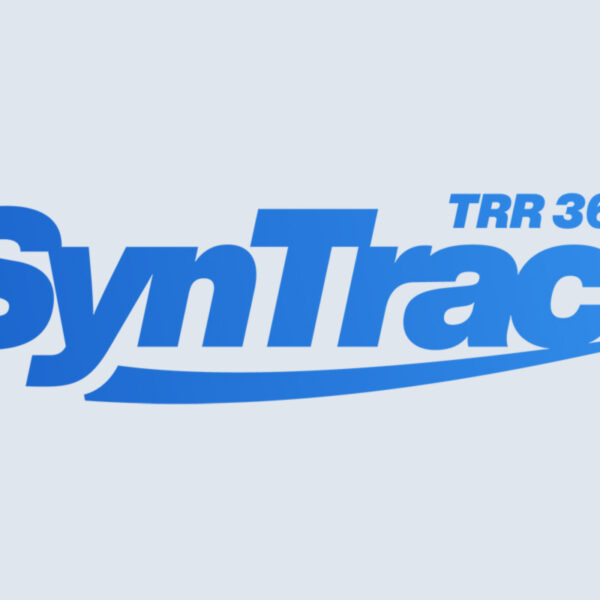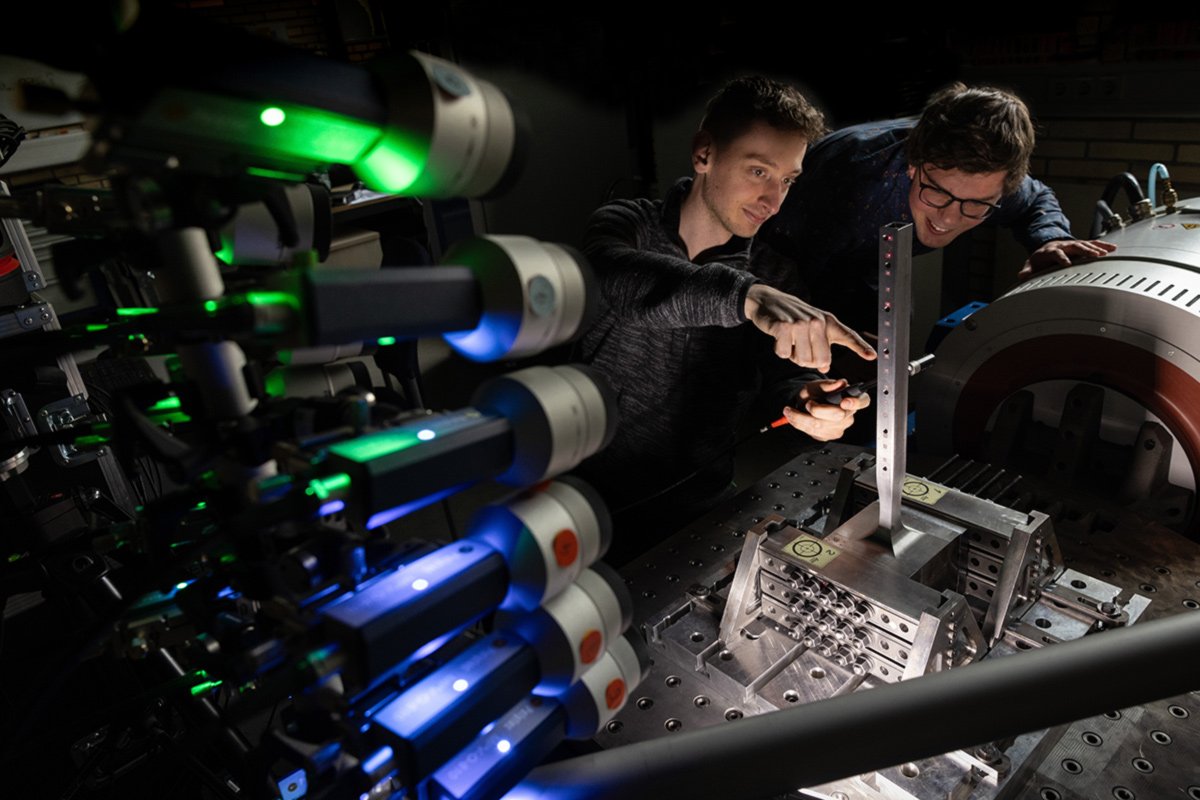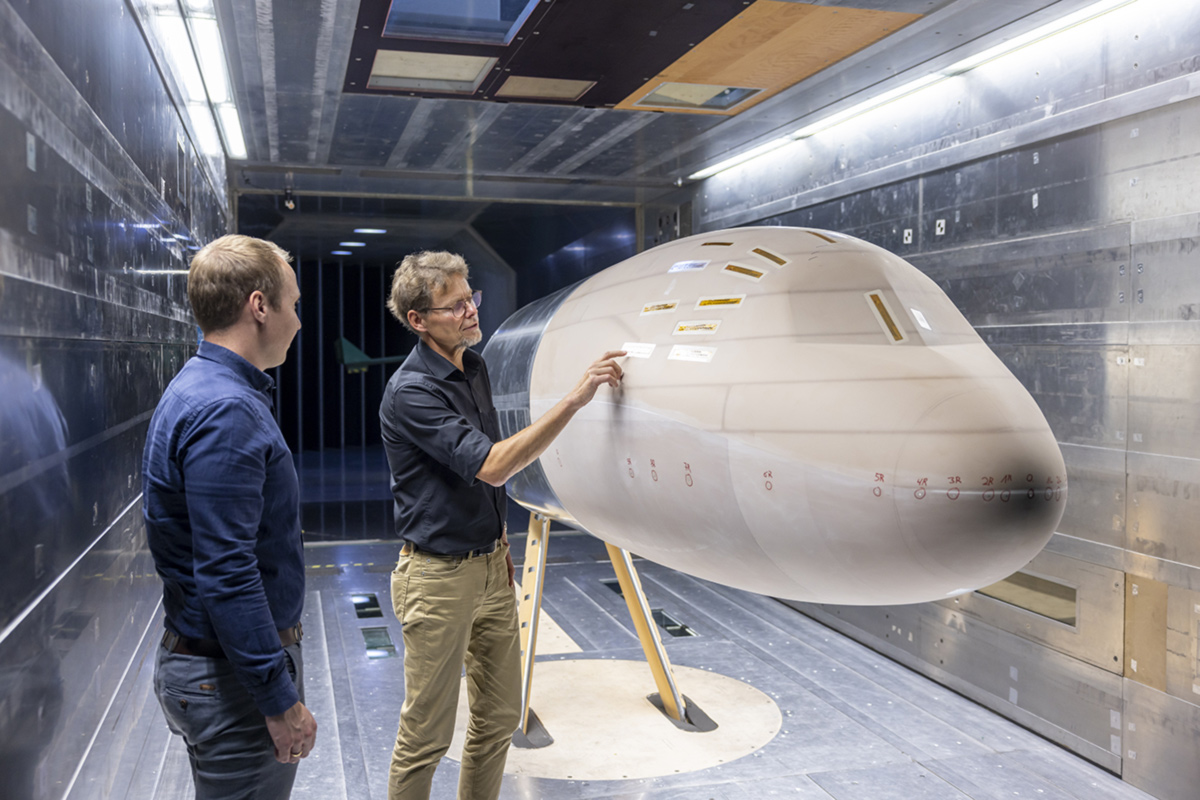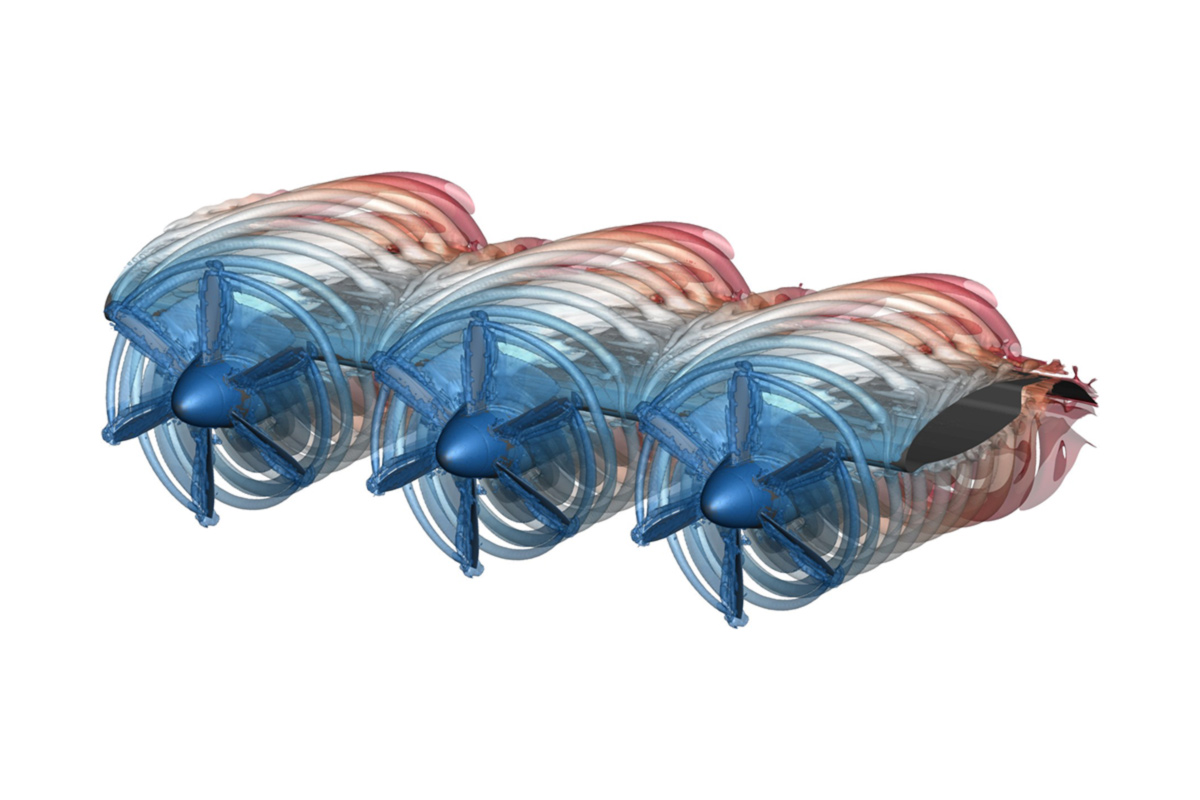C06: Aeroacoustic aspects of distributed propulsion
To benefit from the efficiency gains of an integrated system design – in this case utilizing distributed propulsion – community acceptance of the technology is paramount. Acoustics and noise are an important driver for this. The goal of C06 is thus to allow an accurate prediction of the main parameter dependencies of sound generation and propagation and further on to integrate acoustics into the design optimization loop for the full aircraft.
Motivation
Noise emissions play a vital role for future aircraft. Predictive capability Is key for the integrated holistic design process of SynTrac.
- Accurate and reliable noise emission simulation
- Analysis of physical phenomena and primary parameter dependencies
- Optimizing aeroacoustics balancing propulsive efficiency
Objective
- Exterior noise mechanisms are analyzed and separated.
- Parameter dependencies of tonal noise components are identified and quantified.
- Relative impact of broadband noise is assessed depending on operational state.
- Integration aspects of noise propagation are contrasted to performance criteria.
- Impact on ground immissions of these dependencies is understood.
- Research tools for simulation are improved and accelerated to fast development cycle times using efficient advanced implementation techniques.
Approach
The project involves Tonal Noise Generation, aiming to identify different noise source mechanisms by varying the acoustic integration surface to eliminate spurious noise.
Additionally, Broadband Noise is addressed through the analysis of generic experiments and literature data for (semi-)empirical noise modeling.
Noise Scattering is another focus, considering shielding and reflection by structures in proximity, integrating the Boundary Element Method-tool into the existing framework.
Finally, Noise Immissions are evaluated, assessing noise at several ground observer positions to generate an immission noise carpet.
Role in SynTrac
C06 is responsible for external noise
of distributed propulsion configurations.
- Preliminary design data and operational parameters are taken from A06.
- Intensive exchange of propeller design and performance data with B02
- Delivery of high-fidelity aeroacoustic loads to B05
- Acoustic trends on control allocations to A04
- Exchange of best practices with C05










